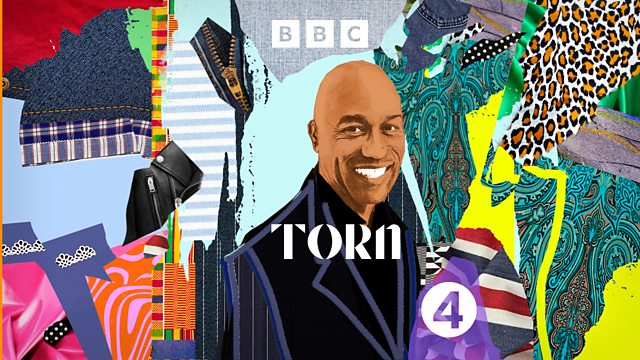Wax Print
Gus Casely-Hayford unravels the origin story of wax print fabric worn by Africans and finds its history spans three continents.
The story of wax print fabric begins not in Africa where the fabric is adored today, but on the island of Java in Indonesia. That’s because, in the 18th century, a Dutch entrepreneur Pieter Fentener van Vlissingen received a curious piece of cloth from his uncle who lived on Java. It had been dyed by a Javanese artisan using a nibbed bamboo stick to create imperfect lines and dots that are set to the fabric with beeswax. Pieter sets about mechanising the technique and finds buyers in West and Central Africa.
In the third episode of Torn, Gus Casely-Hayford sets out to find out if wax print fabric can really be considered African if the original design comes from Asia and the manufacturing process is the result of European industrialisation. He asks those who wear wax print in West and Central Africa what it means to them that their most recognisable fabric is a product of colonialism.
From the Togolese businesswomen who set up workshops and imported printing machines to supply the region with wax print in the 1950s, to their foremothers who bartered with European fabric merchants in the 19th century, and the tailors who sew clothes for millions of people in West and Central Africa today, wax print is African. But the fact that none of the major wax print producers are fully African-owned has led some designers on the continent to shun its use in favour of indigenous fabrics.
With filmmaker Aiwan Obinyan, interior designer MablΓ© Agbodan and historical records from the Dutch wax print company Vlisco.
Presenter: Gus Casely-Hayford
Executive Producer: Rosie Collyer
Assistant Producer: Nadia Mehdi
Researcher: Zeyana Yussuf
Production Coordinator: Francesca Taylor
Sound Design: Rob Speight
A Novel production for Βι¶ΉΤΌΕΔ Radio 4
Last on
Broadcasts
- Wed 24 Aug 2022 13:45Βι¶ΉΤΌΕΔ Radio 4
- Sun 18 Dec 2022 00:15Βι¶ΉΤΌΕΔ Radio 4
Podcast
-
![]()
Torn
Gus Casely-Hayford unpicks the hidden histories behind what we wear.


